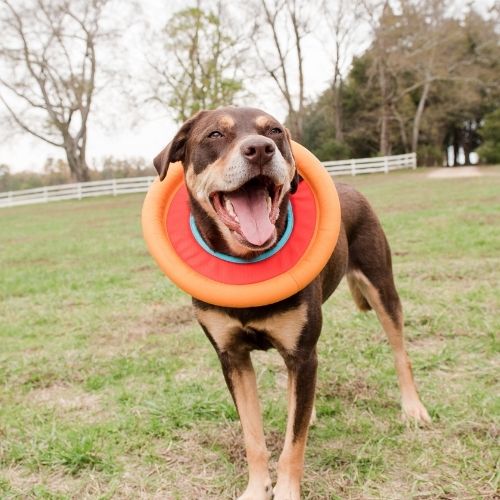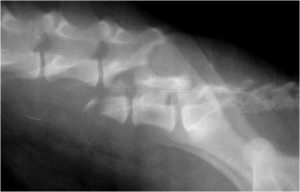Your Pet Comes First
Neurological Procedures
Learn more about the neurological services we offer below.

Neurological Procedures

Lumbosacral Stenosis
Lumbosacral instability (also known as L-S disease or cauda equina syndrome) is caused by the compression of nerve roots (nerves as they exit the spinal cord) which result in complex of neurologic signs. The condition is common and can be either acquired (degenerative) or congenital (developmental).
Clinical Signs:
L-S disease is most commonly present within large breed dogs. Dogs with a previous history of back pain with a reluctance to run, jump, and squat are often affected by L-S disease. Early in the course of the disease, back pain is the primary symptom shown. As the syndrome progresses, compression of the nerve roots will gradually worsen. These animals will experience chronic pain and begin to notice reduced neurologic function. As neurologic function deteriorates, dogs experience muscle atrophy in the rear limbs and ataxia (staggering) during motion. Dogs may carry their tail lower and wag their tails excessively due to pain. Tingling sensations in their feet, tail, and genitals may lead to constant licking and chewing of the affected area. Rarely will animals have neurologic dysfunction of the urinary and anal sphincter resulting in urinary or fecal incontinence.
Diagnosis:
L-S disease can be diagnosed through a combination of identified clinical signs and performed diagnostic tests. Radiographs (x-rays) can be helpful; however, some dogs can have nerve root compression with no visible radiographic abnormalities. Computed Tomography (CT or CAT scan) allows for three-dimensional reconstructions of the L-S space. This diagnostic modality evaluates the bony and soft tissue (disc and ligamentous) structures leading to nerve root compression. Since L-S instability results in back pain and reluctance to walk early on in the course of the disease, it is important to rule out orthopedic conditions such as hip dysplasia or bilateral cranial cruciate ligament ruptures as a cause for the discomfort. As the disease progresses, neurologic conditions such as intervertebral disc herniation and degenerative myelopathy need to be ruled out.
Treatment:
Dogs suffering from mild L-S disease can often be sufficiently treated with anti-inflammatory drugs and exercise modification. If the condition is more severe, surgical correction will be recommended by your veterinarian. A dorsal hemilaminectomy is performed, which involves removal of the top of the vertebral bodies over the L-S space and excising the compressive disc. The collapsed disc space can then be distracted back to length and stabilized using bone screws.
Post-Operative Care:
Dogs usually experience higher levels of comfort following the surgery. However, the full benefits of the surgery won’t come into effect until 2 to 3 months after the procedure. We recommend restricting dogs to calm leashed activity for 3 months allowing for the fusion of the L-S space. Following this period, animals can return to full function. Dogs treated early in the course of the disease have a better post-operative outcome compared to animals where the neurologic function has already deteriorated. Dogs experiencing incontinence before surgery will likely never regain continence. The collapse of the stabilized joint space is a potential complication, although it is rare. Surgical risks and complications are low, and the outcome for affected dogs is typically a success.
Spinal Fractures
Contrary to the belief that a spinal fracture results in a permanent, debilitating injury, the prognosis for such fractures can often be hopeful.
Factors such as the fracture location, degree of displacement, and present neurologic signs before stabilization affect the outcome of recovery. The prognosis for a return to function is favorable for patients who have maintained motor function or pain perception to their limbs. If there is a loss of deep pain (meaning there is no recognition when extreme pressure is applied to a digit), the prognosis for a return to normal activity is unlikely. Not all spinal fractures require surgical stabilization. Many can be treated through routine rest and following strict exercise restrictions for 8 to 12 weeks.

